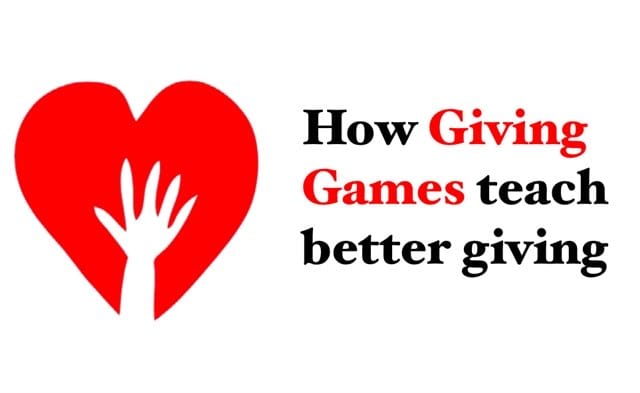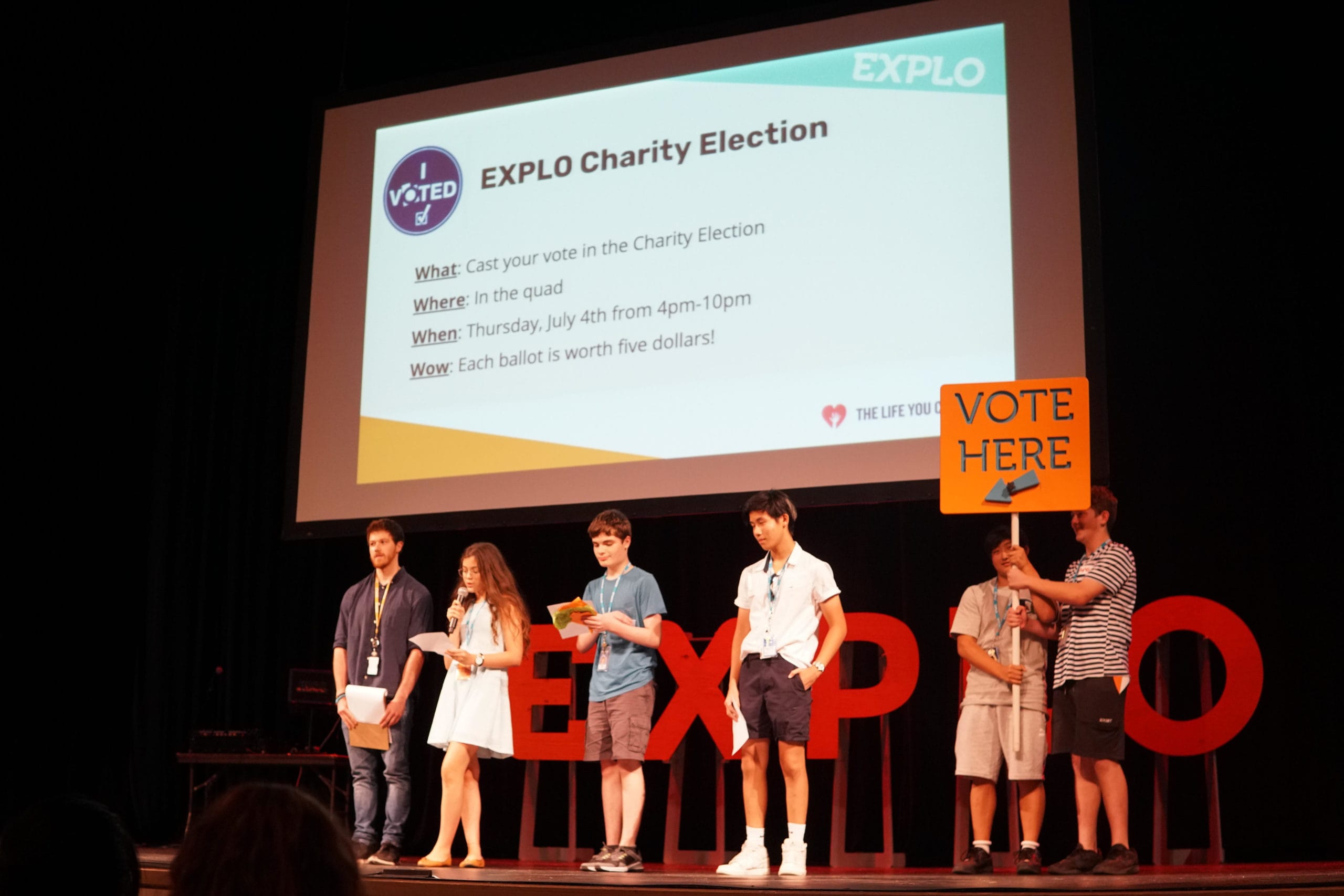The Life You Can Save has helped host Giving Games across college campuses, high school classrooms, and alongside corporate innovators. Both participants and facilitators have given us overwhelmingly positive feedback about the Giving Games they’ve hosted. Here are a few reasons why we believe our Giving Games empower potential donors to give effectively.
Giving Games come in all sorts of varieties, but all share certain commonalities. In essence, Giving Games provide potential donors with valuable information about effective giving. Our Giving Games are designed to apply what we know about promoting more generous and more effective giving.
Let’s examine the key elements of a Giving Game.
Giving Games provide critical information to participants
A 2010 study entitled “Money for Good” makes three recommendations for improving the quality of giving:
1. Provide simple information that donors will use
2. Provide information to donors
3. Build broad awareness around key messages
The Giving Game model does all three of these things. Participants receive information about effective charities and valuable donor resources. We believe that more people would use high-quality charity evaluators if they knew that this information is already publically available. Giving Games are an easy way to close this information gap. Participants also learn simple but vital concepts such as cost-effectiveness and the importance of researching giving decisions.
Giving Games ask the right question
Why we should ask “Which charity is better?” instead of “Is this charity good?”
Here’s an easy way to find a better giving opportunity than the charity you’d give to by default: consider another charity, and then make it your new default if it seems like an improvement. Repeat.
However, few donors utilize this sort of comparative framework. According to the “Money for Good” study, only 3% of donors give based on the relative performance of different charities (slide 41).
In a Giving Game, participants weigh selected charities’ performance on a relative basis. Giving Games place the opportunity cost of giving to a particular charity front and center. In a Giving Game, choosing one charity means not choosing others. This framework forces participants to think strategically about what they want to accomplish with their giving and about which criteria to use to make their choice.[1] Even using the word “Game” in the name of these sessions helps encourage this strategic mindset.
Giving is costless, or low-cost, for the participants
The donations in Giving Games are typically sponsored in full or in part by outside parties. The Life You Can Save sponsors the majority of our Giving Games. So most participants get to play for free.
When the prospect of shelling out one’s own donation money is taken out of the equation, the overall giving experience becomes much more positive, and those feelings become associated with charitable giving.
Instead of worrying about whether to donate, participants can focus more of their attention on where to donate, and on how they should decide.
Giving Games promote future giving
Our Giving Game participants have a lot of future giving ahead of them. We see our Giving Games as opportunities to influence generations of future effective givers.
With a lifetime of giving ahead of them, college students make a terrific audience for Giving Games.[2] They’re generally open-minded and have few pre-established views about giving.[3] We disproportionately run Giving Games at elite schools, helping us probabilistically target future high-earners.
When college students play a Giving Game, they see the activity as oriented around their future giving. This framing promotes pro-social behavior because it psychologically distances the participants from the cost of paying for a donation.[4]
Now that we’ve started running Giving Games at businesses and corporations, we’re reaching more and more young professionals. We’re prioritizing working with businesses in high-paying industries, particularly those that are naturally receptive to ideas about cost-effectiveness and evidence-based decision making.
Giving Games make thoughtful giving seem like socially expected behavior
Humans are social creatures, and Giving Games harness social pressures to promote better giving. Participants are surrounded by peers behaving as if effective giving is important, so there’s a natural inclination to behave the same way. Similarly, the facilitator who introduces the game serves as an authority figure endorsing the exercise.
Even if someone is “peer-pressured into giving better,” that’s unlikely to be his or her self-perception. Which of these statements is easier for such a person to accept psychologically?
A. I think effective giving is important because I want to impress my friends.
B. I think effective giving is important because that’s a good and smart thing to think and I’m a good and smart person.
If people think (B), that’s a good thing. And that’s the belief that cognitive dissonance theory suggests people gravitate toward since it’s more consistent with their self-image.[5]
Participants learn better because they’re engaged
The Giving Game model is designed to give participants an active learning environment. Since they’re making real decisions with real consequences, the subject matter becomes tangible instead of abstract. Instead of taking notes while someone else talks, participants are part of the conversation- the longest part of most Giving Games is the discussion between participants.
Conclusion
Each aspect of Giving Games is designed to promote better giving, and we’re still learning new ways to fine-tune these designs. But a model that promotes better giving isn’t enough to improve our giving culture; the model needs to be cost-effective and scalable as well. Our next two blog posts on Giving Games will address those issues.
[1] One study suggests that a “joint evaluation” framework can lead donors to utilize more meaningful criteria in their giving, in this stylized case “Lives saved per dollar” rather than “overhead ratio.” The authors report: “Subjects who were presented with only one charity (separate-evaluation) donated larger amounts to charities with lower overhead ratios. Subjects who were presented with two charities (joint-evaluation 1–3) donated more to the more effective charity” (Source: Caviola et al, 2014).
[2] Back of the envelope math: Per capita giving by US adults is a little over $1,000 a year and the average life expectancy in the US is roughly 79 years. So assuming people graduate from college at 22, that very roughly implies about $57,000 in adult giving in today’s dollars per participant. Since these participants are presumptive college graduates (who presumably give more than average), we’d expect this to be a low-end estimate.
[3] By contrast, donors overall are extremely loyal, making it hard to shift their giving to more effective causes. “Almost 80% of all gifts made are “100% loyal,” meaning that there is a virtual certainty that these gifts will be repeated next year” (Money for Good, slide 16). While this loyalty makes it hard to convert existing donors, it suggests that converting young donors to better giving habits could have lasting effects.



